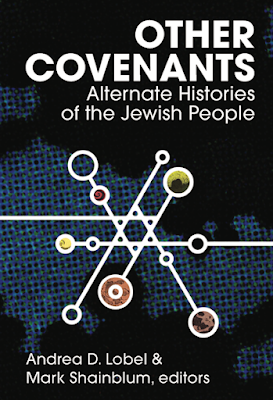Counterfactualism in Monuments
Here is a great example of how "what if?" thinking can find physical expression in the form of public monuments.
Several years ago in 2009, an intriguing monument was erected in Munich in memory of the Georg Elser's failed assassination attempt against Nazi dictator, Adolf Hitler, on November 8, 1939.
On that evening, Hitler was speaking at the Bürgerbräukeller in front of thousands of Nazi leaders and Alte Kämpfer as part of the annual ceremonies commemorating the Beer Hall Putsch events of November 8/9, 1923. Unbeknownst to the Nazi leadership, Elser had placed a bomb inside the pillar that stood behind Hitler's podium. Elser timed it to detonate at 9:20, at which point Hitler should have still been speaking.
However, bad weather led the Nazi dictator to leave the venue early (heavy fog had led him to cancel his planned plane trip back to Berlin and instead take the train, which required an earlier departure).
What if the fog had lifted?
Had Hitler died in the resulting explosion (which, in fact, killed eight people and wounded dozens more), the course of history would undeniably have turned out differently.
In order to prompt people to think about this possibility today, the city of Munich commissioned Frankfurt artist Silke Wagner to design a monument, which in 2009 was erected on the side of the Türkenschule in Schwabing.
The memorial is composed of an abstract text, reading "8. November 1939," whose letters are arrayed in the form of an explosion. Every evening the letters (which are ringed in neon) light up at exactly 9:20 to mark the time of the blast.
As one newspaper review opined: "the memorial directs attention to that minute when the history of the 20th century could have taken a different turn, if Elser had succeeded in his long-planned assassination."
Several years ago in 2009, an intriguing monument was erected in Munich in memory of the Georg Elser's failed assassination attempt against Nazi dictator, Adolf Hitler, on November 8, 1939.
On that evening, Hitler was speaking at the Bürgerbräukeller in front of thousands of Nazi leaders and Alte Kämpfer as part of the annual ceremonies commemorating the Beer Hall Putsch events of November 8/9, 1923. Unbeknownst to the Nazi leadership, Elser had placed a bomb inside the pillar that stood behind Hitler's podium. Elser timed it to detonate at 9:20, at which point Hitler should have still been speaking.
However, bad weather led the Nazi dictator to leave the venue early (heavy fog had led him to cancel his planned plane trip back to Berlin and instead take the train, which required an earlier departure).
What if the fog had lifted?
Had Hitler died in the resulting explosion (which, in fact, killed eight people and wounded dozens more), the course of history would undeniably have turned out differently.
In order to prompt people to think about this possibility today, the city of Munich commissioned Frankfurt artist Silke Wagner to design a monument, which in 2009 was erected on the side of the Türkenschule in Schwabing.
The memorial is composed of an abstract text, reading "8. November 1939," whose letters are arrayed in the form of an explosion. Every evening the letters (which are ringed in neon) light up at exactly 9:20 to mark the time of the blast.
As one newspaper review opined: "the memorial directs attention to that minute when the history of the 20th century could have taken a different turn, if Elser had succeeded in his long-planned assassination."




Comments